Cyclopean Fortress Of Sacsayhuamán – ‘Impossible’ Ancient Technology In Peru
A. Sutherland - AncientPages.com - Sacsayhuamán is undoubtedly one of the most impressive and mysterious fortresses of the Andes.
The stonework of Sacsayhuamán was created by extremely skilled stonemasons and we can only wonder who they really were.
Close up of the stone wall. Image credit: Sharonkuei - CC BY-SA 4.0
We have nothing but a true mystery, which seems to be impossible to solve.
Three gigantic, 1,500 feet long and 54 feet wide walls were once erected near the city of Cuzco, Peru, at an altitude of over 3600 m (12,000 feet). The walls surround a paved area containing a circular stone structure that could be a solar calendar and other structures both on the surface and underground.
Was it a place of worship or a fortress? It is unknown. The period in which the walls were erected is also unclear.
Officially, the Killke culture (900 to 1200 AD) is credited for building Sacsayhuamán; these people occupied the South American region around Cusco, Peru before the arrival of the Incas in the 13th century. Unfortunately very little is known about this period of time because neither the Killke people nor the Inca left any writings behind. As we know, they only had their famous ‘quipu’ records that helped them to records important events of their lives.
It is known, however, that many Killke settlements were later reused and further rebuilt by the Inca who arrived in the region. But the question is: Was Sacsayhuamán really constructed by Killke people?
In his book "Lost Ancient Technology Of Peru And Bolivia", Brien Foerster writes that "the Killke occupied the region from 900 to 1200, prior to the arrival of the Inca. Carbon 14 dating of Sacsayhuaman, had demonstrated that the Killke culture constructed the fortress about 1100. The Inca later expanded and occupied the complex in the 13th century and after. However, if the excavations were to proceed much deeper, evidence of earlier cultures could be present."
Sacsayhuamán, Cusco, Peru. Image credit: Diego Delso - CC BY-SA 4.0
Could the Killke builder's skills be high enough to construct something such extraordinary as the massive fortress, Sacsayhuamán, which is officially dated to the 12th century?
Three gigantic, 1,500 feet long and 54 feet wide walls were erected near the city of Cuzco, Peru, at an altitude of over 3600 m (12,000 feet). The walls surround a paved area containing a circular stone structure that could be a solar calendar and other structures both on the surface and underground.
But as D. H. Childress points out in his book “Ancient Technology in Peru and Bolivia”
“Sacsayhuaman may still be hundreds or even thousands of years older than the Killke culture. There seems to be no reason why building in the Cuzco and Sacsayhuaman area would have only begun in 1100 AD when the megalithic building had begun much earlier in other areas…”
The stonework of Sacsayhuamán is not the only enigma of this place. Another is a hidden 30,000 year-old writing found in the Sacsayhuamán Temple by Dr. Derek Cunningham, a published author, and researcher.
While studying how the massive stone blocks are connected revealing remarkable precision-fitting of stones, the researcher discovered that the Sacsayhuamán stone angles reveal something extraordinary.
As a result of his analysis, Cunningham presented a highly unorthodox theory that our ancient ancestors developed ‘writing’ at least 30,000 years ago from a geometrical form of text that is based on the motion of the moon and the sun.
According to the researcher, this mysterious astronomical ‘writing’ has been also found in prehistoric places on other continents.
Written by A. Sutherland - AncientPages.com Staff Writer
Copyright © AncientPages.com. All rights reserved. This material may not be published, broadcast, rewritten or redistributed in whole or part without the express written permission of AncientPages.com
Expand for referencesMore From Ancient Pages
-
 Ancient Mystery Of Leti – A Homo Naledi Child Of Darkness Discovered In The Rising Star Cave System
Archaeology | Nov 6, 2021
Ancient Mystery Of Leti – A Homo Naledi Child Of Darkness Discovered In The Rising Star Cave System
Archaeology | Nov 6, 2021 -
 Frightening Edinburgh Vaults: The Spooky Underground City Of The Dead
Featured Stories | Jun 4, 2016
Frightening Edinburgh Vaults: The Spooky Underground City Of The Dead
Featured Stories | Jun 4, 2016 -
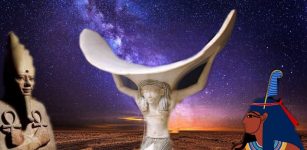 Shu: Egyptian God Of Air, Symbol Of Life-Giving Breath And The One Who Separates Heaven From Earth
Egyptian Mythology | Oct 23, 2020
Shu: Egyptian God Of Air, Symbol Of Life-Giving Breath And The One Who Separates Heaven From Earth
Egyptian Mythology | Oct 23, 2020 -
 Is This The Face of Queen Elizabeth I?
Archaeology | Oct 15, 2018
Is This The Face of Queen Elizabeth I?
Archaeology | Oct 15, 2018 -
 Raijin: Shinto God Of Thunder And Lightning With Three Fingers Representing Past, Present And Future
Featured Stories | Feb 10, 2020
Raijin: Shinto God Of Thunder And Lightning With Three Fingers Representing Past, Present And Future
Featured Stories | Feb 10, 2020 -
 Mysterious Lost City Of The Tairona Hidden In The Jungles Of Colombia
Civilizations | Nov 9, 2018
Mysterious Lost City Of The Tairona Hidden In The Jungles Of Colombia
Civilizations | Nov 9, 2018 -
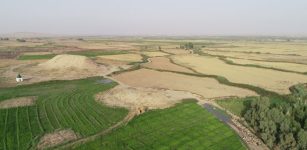 Ancient Mesopotamian Discovery Changes Our Understanding Of Early Agriculture Practices
Archaeology | Jan 17, 2022
Ancient Mesopotamian Discovery Changes Our Understanding Of Early Agriculture Practices
Archaeology | Jan 17, 2022 -
 Archaeological Evidence Ancient Egyptians Visited South America
Ancient Mysteries | Jan 7, 2020
Archaeological Evidence Ancient Egyptians Visited South America
Ancient Mysteries | Jan 7, 2020 -
 Long-Lost Burial Site Of Viking King Harald Bluetooth Discovered By Satellites?
Archaeology | Jun 29, 2022
Long-Lost Burial Site Of Viking King Harald Bluetooth Discovered By Satellites?
Archaeology | Jun 29, 2022 -
 Huge 1,400-Year-Old Hall Of The First Kings Of East Anglia Discovered In Rendlesham
Archaeology | Oct 5, 2022
Huge 1,400-Year-Old Hall Of The First Kings Of East Anglia Discovered In Rendlesham
Archaeology | Oct 5, 2022 -
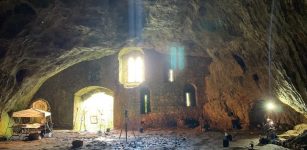 Cave Hidden Under Pembroke Castle in Wales Could Hold Secrets Dating Back 10,000 Years
Archaeology | Jul 16, 2022
Cave Hidden Under Pembroke Castle in Wales Could Hold Secrets Dating Back 10,000 Years
Archaeology | Jul 16, 2022 -
 The Curse Fell On King Midas And His Gold Desire Became A Nightmare
Featured Stories | Feb 6, 2025
The Curse Fell On King Midas And His Gold Desire Became A Nightmare
Featured Stories | Feb 6, 2025 -
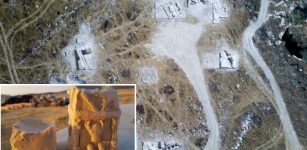 Large Mysterious 2,000-Year-Old Structure Discovered At The Center Of A Military Training Area In Israel
Archaeology | Dec 3, 2017
Large Mysterious 2,000-Year-Old Structure Discovered At The Center Of A Military Training Area In Israel
Archaeology | Dec 3, 2017 -
 Herostratic Fame Relates To Herostratus Who Burned The Beautiful Temple Of Artemis To Become Famous
Ancient History Facts | Jan 6, 2017
Herostratic Fame Relates To Herostratus Who Burned The Beautiful Temple Of Artemis To Become Famous
Ancient History Facts | Jan 6, 2017 -
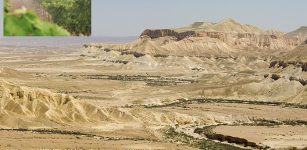 Mystery Of Ancient Gaza Wine – New Insight
Archaeology | Apr 26, 2023
Mystery Of Ancient Gaza Wine – New Insight
Archaeology | Apr 26, 2023 -
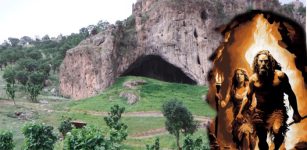 Has The Mystery Of Neanderthals’ Flower Burial At Shanidar Cave Been Solved?
Archaeology | Aug 31, 2023
Has The Mystery Of Neanderthals’ Flower Burial At Shanidar Cave Been Solved?
Archaeology | Aug 31, 2023 -
 Baby Carriers Were Used 10,000 Years Ago – New Evidence
Archaeology | Sep 27, 2022
Baby Carriers Were Used 10,000 Years Ago – New Evidence
Archaeology | Sep 27, 2022 -
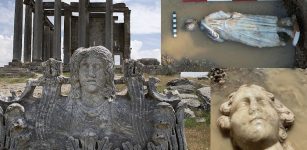 More Greek Gods’ Heads And A Life-Sized Statue Of A Man Unearthed In The Ancient City Of Aizanoi
Archaeology | Dec 28, 2022
More Greek Gods’ Heads And A Life-Sized Statue Of A Man Unearthed In The Ancient City Of Aizanoi
Archaeology | Dec 28, 2022 -
 Cosmic Message Of The Zapotec Glyphs In The Valley Of Oaxaca – Deciphered!
Archaeology | Mar 10, 2022
Cosmic Message Of The Zapotec Glyphs In The Valley Of Oaxaca – Deciphered!
Archaeology | Mar 10, 2022 -
 Harappan Civilization Built Massive Protection Walls Against Tsunami 5,000 Years Ago
Archaeology | Jan 10, 2017
Harappan Civilization Built Massive Protection Walls Against Tsunami 5,000 Years Ago
Archaeology | Jan 10, 2017


